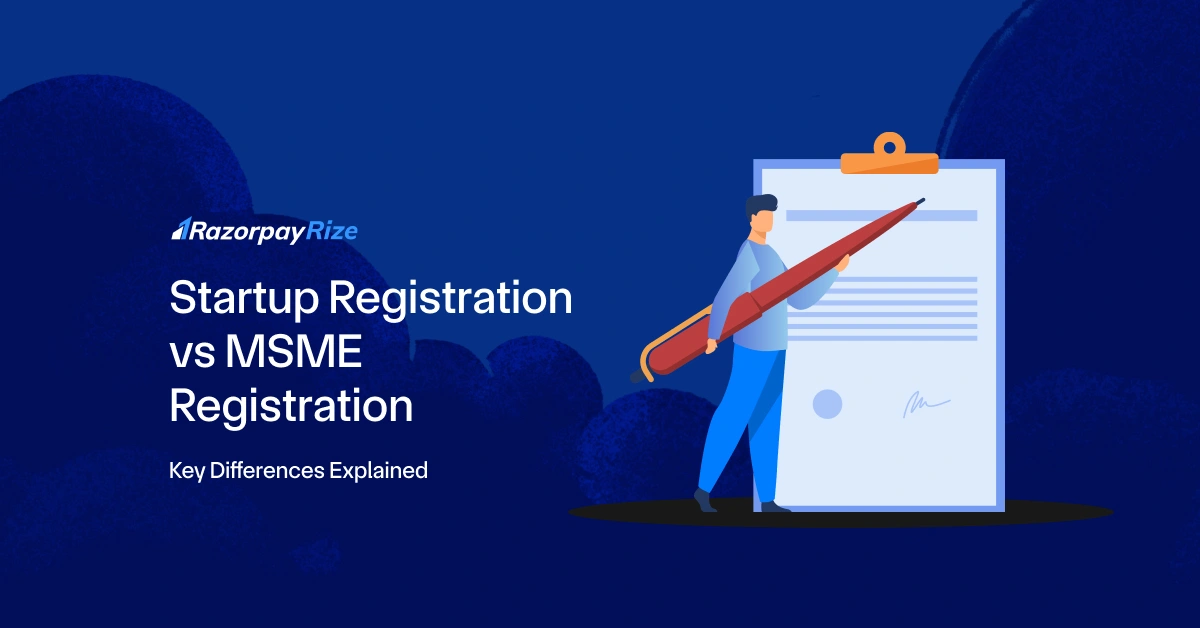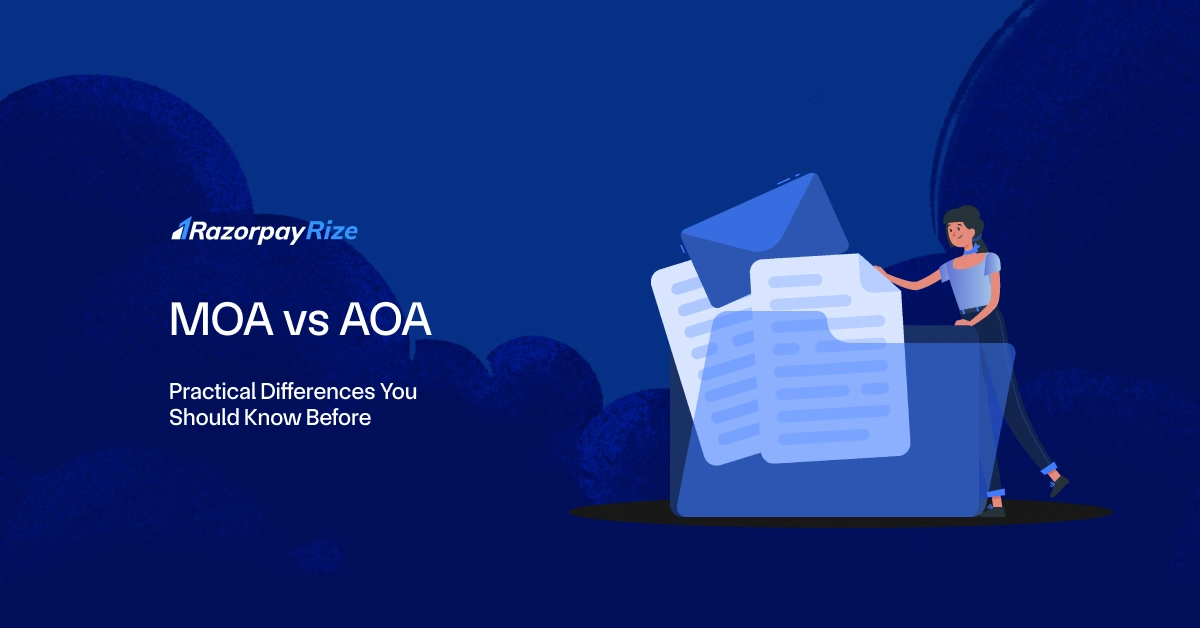A Power of Attorney (POA) is an important legal document that empowers a person to act on behalf of another in specific or broad matters. It allows an individual (known as the principal) to legally authorise another trusted person (the agent or attorney-in-fact) to make decisions and take actions on their behalf.
This can include a wide range of responsibilities, from buying or selling property to managing financial transactions, operating business interests, and even representing the principal in legal matters.
In this article, we’ll explore everything you need to know about Power of Attorney- its types, formats, uses, drafting tips, and legal procedures for registration and revocation.
Table of Contents
What is a Power of Attorney (POA)?
A Power of Attorney is a legal authorisation where one person (called the principal) grants another person (called the agent or attorney-in-fact) the right to act on their behalf in legal, financial, or property-related matters.
This relationship is built on trust, as the agent will make decisions and act with the same legal force as if the principal were doing so themselves.
Common scenarios where a POA is used:
- Managing financial accounts and transactions
- Buying or selling property
- Representing someone in legal proceedings
- Handling matters for Non-Resident Indians (NRIs) who cannot be physically present
- Acting on behalf of elderly or incapacitated individuals
Power of Attorney Format
A typical Power of Attorney document should include the following essential elements:
- Title (e.g., “General Power of Attorney” or “Special Power of Attorney”)
- Date of execution
- Details of the principal (name, address, identification details)
- Details of the agent/attorney (name, address, identification details)
- Purpose and scope of authority granted
- Specific powers authorised
- Duration of the POA (if applicable)
- Signatures of the principal and witnesses
- Notarisation and/or registration as required
General Power of Attorney Format
Here is a basic outline of a General POA format:
- Title: General Power of Attorney
- Introduction: Declaration of the principal granting authority to the agent
- Identification of parties: Full legal names, addresses, and identification of both parties
- Purpose: Statement of broad authority being granted
- Scope of Powers:
- Managing bank accounts
- Handling property matters
- Representing in government offices
- Signing documents/contracts
- Validity: Duration or condition of termination
- Signatures: Principal’s signature with date
- Witnesses: Two witnesses with signatures and identification details
- Notarisation: Certification by a notary public
How to Draft a Power of Attorney?
When drafting a Power of Attorney, it is essential to:
- Clearly identify the principal and agent with accurate details
- Specify the scope of authority clearly, and avoid vague language
- Use proper legal language for enforceability
- Define limitations or exclusions, if any
- Mention the duration or circumstances under which the POA expires
- Consult a legal expert if the POA involves high-value assets or complex transactions
How to Register a Power of Attorney?
In India, many types of POAs (especially those involving property) require registration under the Indian Registration Act of 1908.
Steps to register a POA:
- Draft the POA document as per legal requirements
- Visit the Sub-Registrar’s Office in the jurisdiction where the principal resides or where the property is located
- Submit the document along with:
- Proof of identity of the principal and agent
- Address proof
- Passport-size photographs
- Pay the applicable registration fees
- Bring two witnesses to sign in front of the registrar
- Once registered, collect a certified copy of the registered POA
Stamp Duty for Power of Attorney
Stamp duty on a POA varies by state and type of POA (General or Special).
- It is mandatory to affix the appropriate stamp paper or pay the stamp duty before execution.
- Failure to pay stamp duty may render the POA inadmissible in court.
- The amount varies significantly, for example, property-related POAs typically attract higher stamp duties.
Authentication Process for Power of Attorney Documents
- For domestic use, POAs are typically authenticated through notarisation and/or registration.For international use (for NRIs, cross-border transactions), additional authentication may be required:
- Apostille: For countries that are part of the Hague Convention, the POA must be apostilled.
- Consular Authentication: In other cases, the POA may need to be authenticated by the Indian Embassy or Consulate.
- Notarisation: Almost always required; adds legal credibility.
{{company-reg-cta}}
Types of Power of Attorney
Several types of Power of Attorney are designed to serve different purposes and situations. Choosing the right type depends on the level of authority you wish to grant and the nature of the tasks involved. Here’s an overview of the most common types:
1. General Power of Attorney
A General Power of Attorney gives the Agent (also known as the Attorney-in-Fact) broad powers to manage a wide range of the Principal’s affairs.
2. Durable Power of Attorney
A Durable Power of Attorney is similar to a General POA in terms of scope but with a key distinction, it remains valid even if the Principal becomes incapacitated.
3. Special or Limited Power of Attorney
A Special (or Limited) Power of Attorney grants the Agent authority to perform specific tasks or make decisions in clearly defined situations.
4. Springing Power of Attorney
A Springing Power of Attorney is unique because it only becomes effective when specific conditions are met, usually when the Principal becomes incapacitated or a triggering event occurs.
Each type of Power of Attorney serves a particular purpose, and selecting the right one depends on your unique needs and circumstances.
Why is POA Necessary for Property Transactions?
Property transactions often involve various legal, financial, and administrative processes. If the property owner is unavailable due to being abroad, physically incapacitated, or otherwise engaged, a POA allows a trusted person to handle matters efficiently.
Situations where POA is especially useful:
- NRI buying or selling property in India
- Elderly property owners needing a family member to manage their affairs
- Business owners delegating property-related responsibilities while focusing on other priorities
General Power of Attorney vs Special Power of Attorney
In short, a General POA covers multiple areas of responsibility, while a Special POA is limited to a specific task.
Things to Keep in Mind When Making a POA
Here are some practical tips for creating a safe and effective POA:
- Choose an honest and trustworthy agent
- Be specific about the powers granted
- Limit the scope and duration of the POA if possible
- Clearly state revocation conditions
- Understand the legal risks of granting broad authority
- Use a lawyer for drafting if the matter is complex
Steps to Revoke Power of Attorney
If you wish to revoke a POA, follow these steps:
- Draft a Revocation of Power of Attorney document.
- Notify the agent formally in writing.
- If the POA is registered, register the revocation document at the Sub-Registrar’s Office.
- Inform relevant third parties (banks, authorities, buyers, etc.) about the revocation.
- Consider publishing a public notice in a newspaper to ensure wide visibility.
This process prevents the agent from continuing to act on your behalf once you have revoked their authority.
Conclusion
A Power of Attorney is an essential and highly versatile legal tool that allows individuals to delegate authority when personal presence is not feasible.
Whether you are an NRI managing property from abroad, an elderly individual who requires assistance with day-to-day affairs, a business owner delegating financial decisions, or simply someone seeking to streamline legal and property-related matters, a properly structured POA can provide immense value, flexibility, and peace of mind.
Frequently Asked Questions
Private Limited Company
(Pvt. Ltd.)
- Service-based businesses
- Businesses looking to issue shares
- Businesses seeking investment through equity-based funding
Limited Liability Partnership
(LLP)
- Professional services
- Firms seeking any capital contribution from Partners
- Firms sharing resources with limited liability
One Person Company
(OPC)
- Freelancers, Small-scale businesses
- Businesses looking for minimal compliance
- Businesses looking for single-ownership
Private Limited Company
(Pvt. Ltd.)
- Service-based businesses
- Businesses looking to issue shares
- Businesses seeking investment through equity-based funding
One Person Company
(OPC)
- Freelancers, Small-scale businesses
- Businesses looking for minimal compliance
- Businesses looking for single-ownership
Private Limited Company
(Pvt. Ltd.)
- Service-based businesses
- Businesses looking to issue shares
- Businesses seeking investment through equity-based funding
Limited Liability Partnership
(LLP)
- Professional services
- Firms seeking any capital contribution from Partners
- Firms sharing resources with limited liability
Frequently Asked Questions
How to prepare a General Power of Attorney?
To prepare a General Power of Attorney (GPA):
- Draft the document clearly stating:
- The Principal’s and Agent’s full details (name, address, identification)
- The broad powers being granted (property management, financial transactions, legal representation, etc.)
- The duration and scope of the POA
- Any limitations or conditions
- Print the document on stamp paper of appropriate value (as per your state’s Stamp Act).
- Sign the document in the presence of two witnesses.
- Get the document notarised.
If required (especially for property-related matters), register the POA at the local Sub-Registrar’s Office.
What is the best form of Power of Attorney?
The best form of Power of Attorney depends on your needs:
- For broad authority across financial, business, and legal matters, A Durable General Power of Attorney is often preferred, especially if you want it to remain valid even if you become incapacitated.
- For specific tasks such as selling a property or managing one transaction, A Special (Limited) Power of Attorney is ideal
What is the cost of a Power of Attorney in India?
The cost of making a Power of Attorney in India mainly depends on:
- Stamp duty
- Registration fee
- Notarisation fee
Additional costs: If you engage a lawyer to draft the document, legal fees may apply.
Is the General Power of Attorney valid?
Yes, a General Power of Attorney is valid in India as long as it is:
- Properly drafted, signed, and executed on appropriate stamp paper
- Notarised or registered, as required
- Created by a Principal who is of sound mind and acting voluntarily
Is a Power of Attorney proof of ownership?
No, a Power of Attorney is not proof of ownership.
A POA merely authorises an Agent to act on the Principal’s behalf- it does not transfer ownership rights or title to property.
What are the new rules of Power of Attorney?
Recent legal developments and Supreme Court judgments in India have clarified the following:
- Property ownership via POA is invalid- A property cannot be legally sold or purchased through a POA alone; a registered sale deed is required to establish ownership.
- Compulsory registration- In most states, POAs used for property-related transactions must be registered with the Sub-Registrar to be legally valid.
- Stamp duty enforcement- States are actively enforcing proper stamp duty payments on POAs, especially those related to property matters.
- Clarity in use- POAs must clearly define powers granted and avoid broad, ambiguous wording to prevent misuse.
















